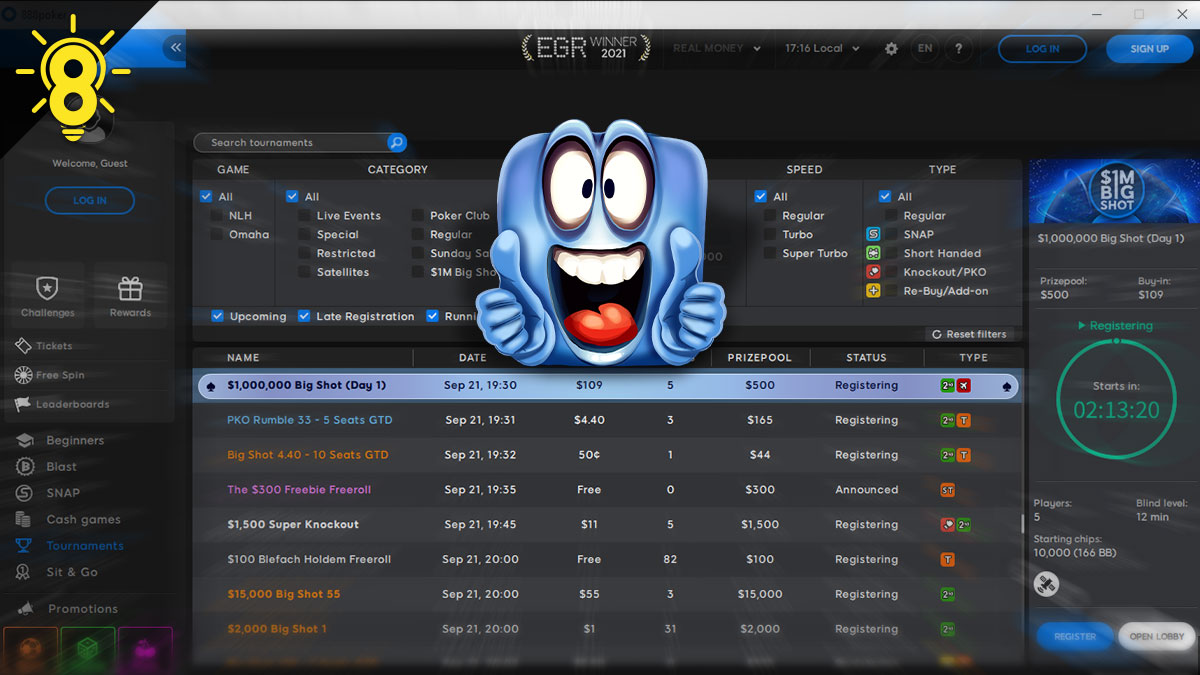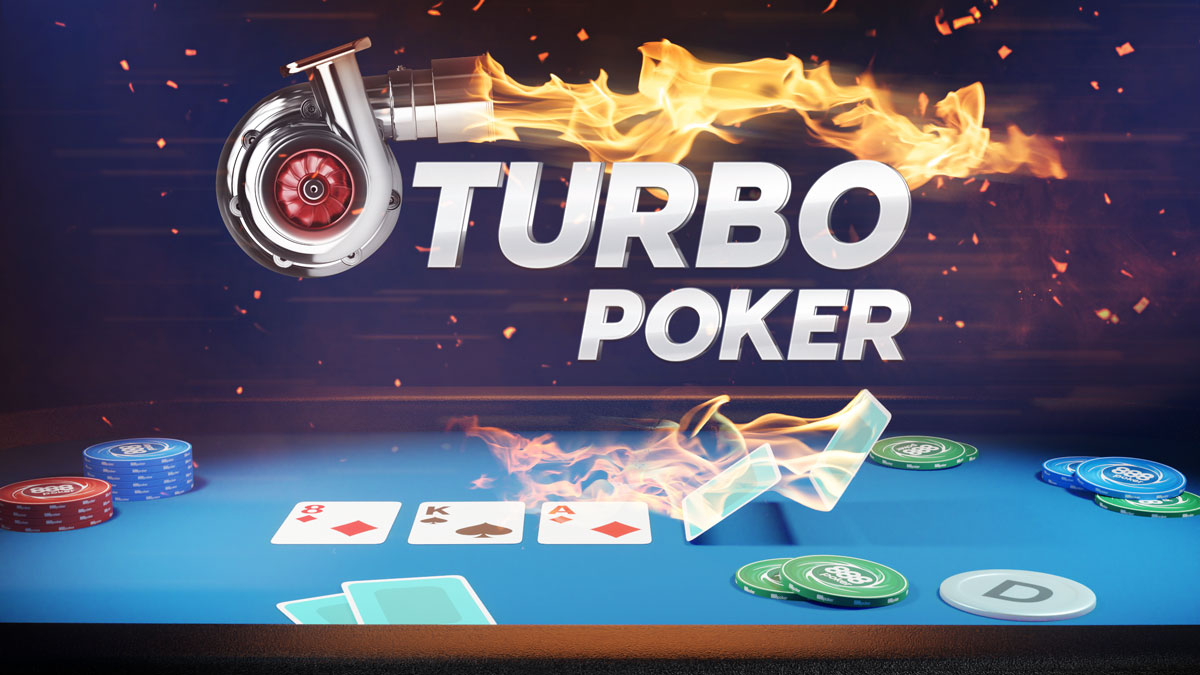If you aspire to achieve great success, tournament poker might just be the ticket to realizing every player's dream. Who wouldn't want to seize a championship title along with life-altering prizes?
Nevertheless, countless players end up being just a source of funds in poker tournaments. They rarely have a viable shot at reaching the final table or coming out on top. Make sure you don’t fall into that category!
The Best Poker Tournament Tips Are:
- Approach the final stages of the tournament with much more assertiveness compared to the initial phases.
- Ensure your stack never dips below 10 big blinds and be ready to either push all-in or fold when the circumstances are right.
- Pay careful attention to the unfolding situation and fine-tune your bet sizes to fit.
- Don’t fall into the trap of thinking you have ownership of your chip stack.
- Seek moments where your chances of success are maximized through an aggressive strategy.
You can turn your situation around with a well-thought-out Texas Hold'em Tournament Strategy strategy. Moreover, it’s essential to effectively implement that strategy in order to secure a win. This guide aims to help you transform into a formidable competitor in tournaments. No one will regard your buy-in as just a stepping stone for their own success anymore.
Key Elements of Tournament Poker Strategy
To start, we'll cover five fundamental tournament strategy tips that new and intermediate players should focus on to evolve into strong adversaries. Think of the type of player that others would prefer to see at another table.
That being said, having an overwhelming amount of information to keep track of during a tournament can hinder your performance. These five foundational tips will aid in keeping your attention on your current task while offering a solid base for future knowledge.
It’s time to prepare yourself for your next tournament battle.
1. Navigating through the Early, Middle, & Late Stages
All poker tournaments Each tournament progresses through its early, middle, and late stages. However, many players tend to approach each phase similarly. Generally, you should adopt a more aggressive stance during the later stages compared to the earlier ones.
One significant reason for this tactic is that the blinds are at their lowest during the initial phase. There’s little reason to take major risks just to accumulate chips. Additionally, by cultivating an image of a tightly played game, you will earn more respect when you begin to widen your play in the later rounds.
Using A-9 Off-suit in Early vs. Late Stages of an MTT
In the early stages of an MTT, a hand like A-9 off-suit may often be thrown away pre-flop. However, as you progress to the later stages, particularly after the bubble bursts, this hand becomes significantly more viable. You can initiate a raise or even a 3-bet when the conditions are favorable. MTT As the tournament advances, the number of players decreases while the blinds rise. This marks a critical time for taking measured risks. With escalating blinds, the ratio of your chip stack to the blinds diminishes rapidly. If you choose to play passively, hoping for premium hands, you might find yourself blinded out, which can be quite disheartening!
Players around you, both at your table and others, are clinching substantial pots and building their chip stacks. The larger stacks are growing, and leaders in the tournament are widening the gap.
Thus, during the middle stages, it’s crucial to keep active. In this part, the button can be your greatest ally. While the aggressive players aim to grow their stacks, the more timid ones typically prefer to fold their way into profit. Capitalize on this! Use their trepidation as an advantage when you’re in position and try to steal blinds. In the later segments of a tournament, blinds are considerably greater, making the risk worthwhile. Additionally, broaden your starting hand selection to include hands that can defeat over pairs. Suited connectors and smaller pairs that allow for set-mining are excellent choices.
In the later stages, it's vital to focus on preserving your chips. Although building your stack is still important, you should be cautious—why risk large portions of the chips you've accumulated through the previous stages? Identify the cautious players and take advantage of their fear of elimination.
For novice tournament competitors, an effective default strategy is to adopt a tight approach during the initial levels. As the tournament progresses, gradually expand your hand ranges—aim to double them through each level of play. By setting this goal, you should be able to navigate the early rounds successfully and advance to the middle stages consistently.
Remember, if you make it a rule to never allow your stack to drop below 10 big blinds and are ready to push or fold at the right moment, you’re bound to improve your tournament game dramatically. No doubt about it!
2. Push or Fold?
However, even with a solid game plan, there will be instances when luck isn’t on your side, causing your stack to dwindle. In such cases, you may find yourself needing to take risks that you wouldn’t normally entertain. When your chips are in short supply, gathering more will often require a bold attitude. This doesn’t mean going all-in at the slightest provocation! This section is titled “Push or Fold?”—not “I’m All-In, No Questions Asked!”
For instance, if you're in an MTT during the middle stages experiencing a raise of 4xBB followed by a 3-bet all-in, risking your remaining $2K with a weak Ace is unwise. This circumstance illustrates the importance of the “push or fold” strategy. In this context, you stand the best chance of winning with a strong hand.
In a general sense, you should only consider calling an all-in when you possess a very strong hand like AA or KK or if your stack is reduced to a point where you have no other choice. Once your chips are so limited, all-in must be on the table. There’s no room for hesitation, waiting for good fortune. showdown Conversely, if you choose to go all-in pre-flop with a somewhat weak hand, you essentially double your chances. Why is that? Because there's a chance everyone else might fold, allowing you to collect the blinds. If someone calls, you still have a shot at winning.
In situations where there is multi-way action post-flop, determining whether to push or fold becomes significantly more complicated. The more opponents you face, the slimmer your odds of winning become.
There are numerous charts available that assist in deciding when to push or fold. The one included below is tailored for the button, but you can find similar charts for various positions around the table. win at showdown Bet sizing can significantly impact whether you reach the final table or exit early. There are essentially two key points in a tournament where bet sizing plays a crucial role—pre-flop and post-flop. Let’s delve into both scenarios:
In tournaments, your pre-flop raises should align with the dynamics at your table. It needs to resonate with your opponents. If you’re raising to 5xBB while everyone else is sticking to 2.5xBB, you’ll draw attention to yourself.
3. Bet Sizing for Tournaments
While some adept players may thrive with such strategies, it’s advisable for beginners to maintain consistency with a standard pre-flop raise value. As the tournament advances, you can adjust this amount—slightly increasing or decreasing—depending on your chip count.
- Pre-flop Bet Sizing
Once the flop is revealed, the real betting begins! At this point, it’s crucial to know the strength of your hand. Almost all situations where you were the pre-flop aggressor warrant a continuation bet! Aim for a size between 50-70% of the pot for your c-bet.
Choosing this amount effectively communicates the strength of your hand—indicating to your opponents that you hold a decent hand. If your bet is too small, you might face a raise or a check-raise. Conversely, betting too large could force you into a commit, calling an all-in with a mediocre hand.
- Post-flop Bet Sizing
Let’s illustrate appropriate c-bet sizing with an example:
Imagine you’re in the early stages of an MTT with blinds at 25/50. You raise to 2.5xBB from the Hijack position with Ad-Qs. The Button calls, while the SB folds and the BB also calls. The flop comes down Qh-9d-2s. You potentially have top pair with a strong kicker. While you should consider the possibility of Q-9 suited being in play, the board seems relatively safe. A c-bet of around 2/3 pot would be an effective approach. This size can help eliminate middle pairs and attract players holding a weaker Q.
As the tournament moves into later phases, consider reducing your c-bet to approximately 25-30% of the pot. Remember, your chips are increasingly valuable, and you need to safeguard them. This isn't the time for reckless betting with weak hands. It becomes even more crucial to manage both your pot size and the betting behaviors of your opponents.
Determining the correct size for a 3-bet can be tricky, especially if other players are still in the pot. Let’s say you’re in the middle stages of a tournament with 45BB, and you find yourself on the Cut-off with suited AK. A middle-position player (with 30BB behind) opens to 2.5xBB, and a player from Hijack (with 25BB) calls.
You aim to place a strong 3-bet here, but what would the right amount be? Since you'll have position throughout the hand, a raise to three times the original amount is appropriate. However, don’t forget to factor in the caller. In multi-way pots, you should account for that added call and modify your 3-bet accordingly. Given one caller exists outside the initial raiser, your 3-bet should be 4x the original raise.
- Pre-flop 3bet Bet Sizing
When out of position, escalate your 3-bet to 4x the original raise against one opponent. If there are multiple players involved, add 1x for every additional player plus an extra 1-2x the original raise. This strategy helps protect your hand while filtering out any unwanted potential flop variations.
Always maintain a close watch on the specific circumstances and adjust your betting sizes appropriately. This attention to detail could very well determine your success or failure in a hand.
Effective Strategies for Poker Tournaments – Essential Tips for Beginners!
Discover foundational strategies for poker tournaments with insights from 888poker. Learn which hands to prioritize and how to effectively approach each phase of a tournament.
4. Making the Final Table
Valuable Beginner Insights on Poker Tournament Strategies
TS-50179-How-to-Play-02_Poker-Tournament-Strategy-1644391924571_tcm1488-547841
If you're pursuing the excitement of poker, tournament play often represents the pinnacle of every player's aspirations. There's something thrilling about the potential to win a prestigious title along with significant cash prizes!
- Yet, many participants end up contributing to the pot without a real shot at making it to the final table or clinching victory. Avoid becoming one of those players!
- In the later stages of a tournament, embrace a much bolder strategy compared to your approach during the initial phases.
- Ensure that your chip stack never dips below 10 big blinds; at critical moments, it's advisable to either push all-in or fold.
- Open up your game – especially if you're deep-stacked Evaluate your circumstances closely and modify your betting amounts as necessary.
- Don’t presume that the chips in your possession are guaranteed; they can disappear quickly.
Focus on scenarios where your aggressive moves can maximize your chances of success.
However, all of this can be changed with a well-thought-out strategy.
Moreover, for such a plan to yield results, you must be committed to executing it effectively. In this guide, we will explore how you can strengthen your tournament skills, ensuring no one views your buy-in as a mere step on their path to triumph.
Key Elements of Tournament Poker Strategy
First off, we will cover five crucial tips that beginners and intermediate players should prioritize to become formidable adversaries in tournaments. The kind of opponent that others dread seeing seated at their table.
That being said, having too much information to remember during play can be just as detrimental. These five core tips are structured to keep you focused on your immediate objectives while laying a solid groundwork for more advanced tactics in the future.
Now is the perfect moment to equip yourself for the next tournament battle.
Let's look at an example:
1. Navigating the Initial, Middle, and Final Phases
Every tournament has its beginning, middle, and end. Nonetheless, many participants treat all phases the same. As a general guideline, your play in the latter stages should be significantly more assertive compared to earlier rounds.
One major reason for this approach is that the blinds are relatively low at the outset. There's no need to take excessive risks just to grab extra chips. Additionally, establishing a reputation as a tight player early on can benefit you later when you choose to widen your range of plays.
Playing A-9 Off-suit During Different Phases of a Multi-Table Tournament
In the early stages of a tournament, hands like A-9 off-suit may be better discarded before the flop. However, as you transition to the late stages, post-bubble, this hand becomes far more viable, allowing for raises and even 3-bets in the right position.








